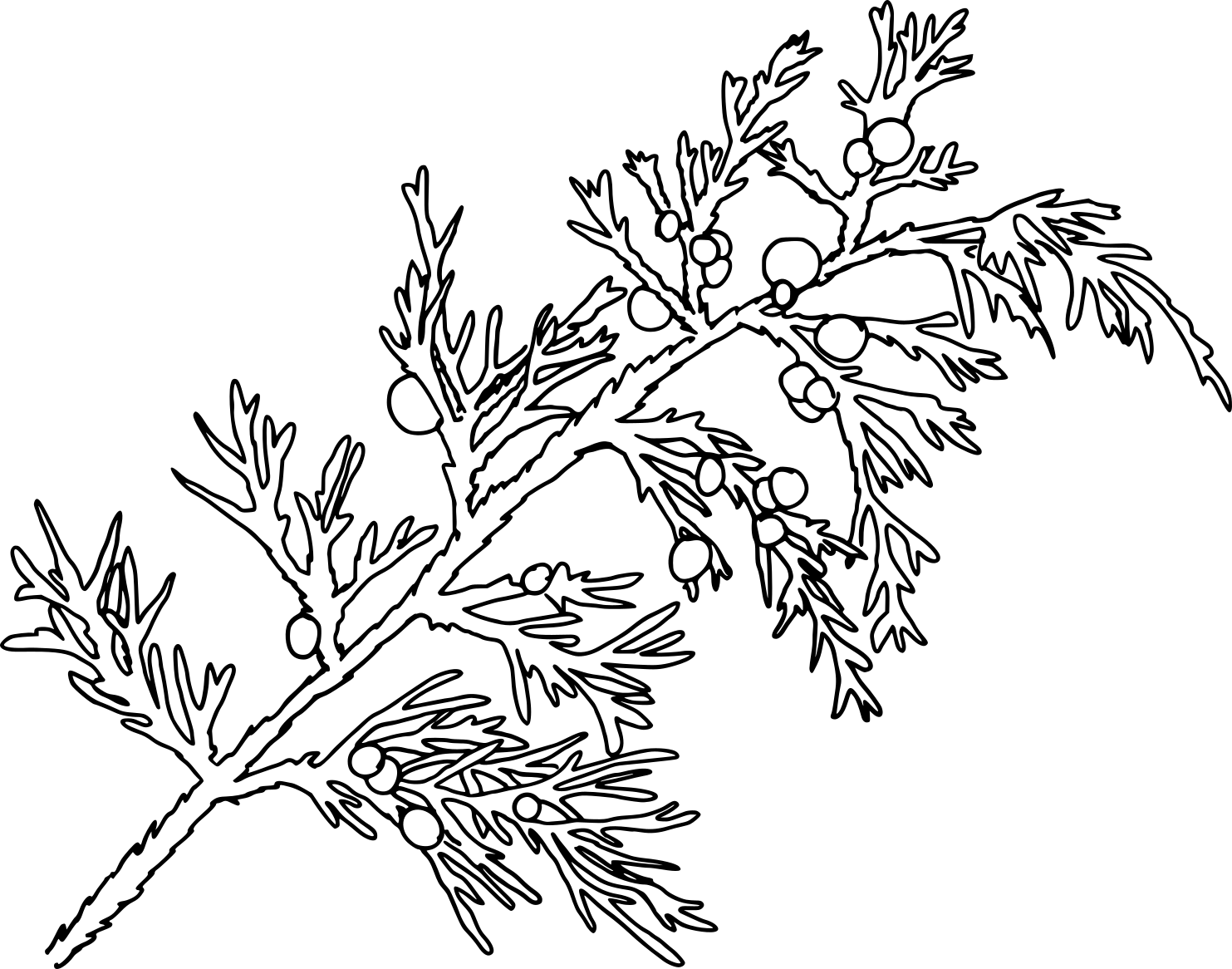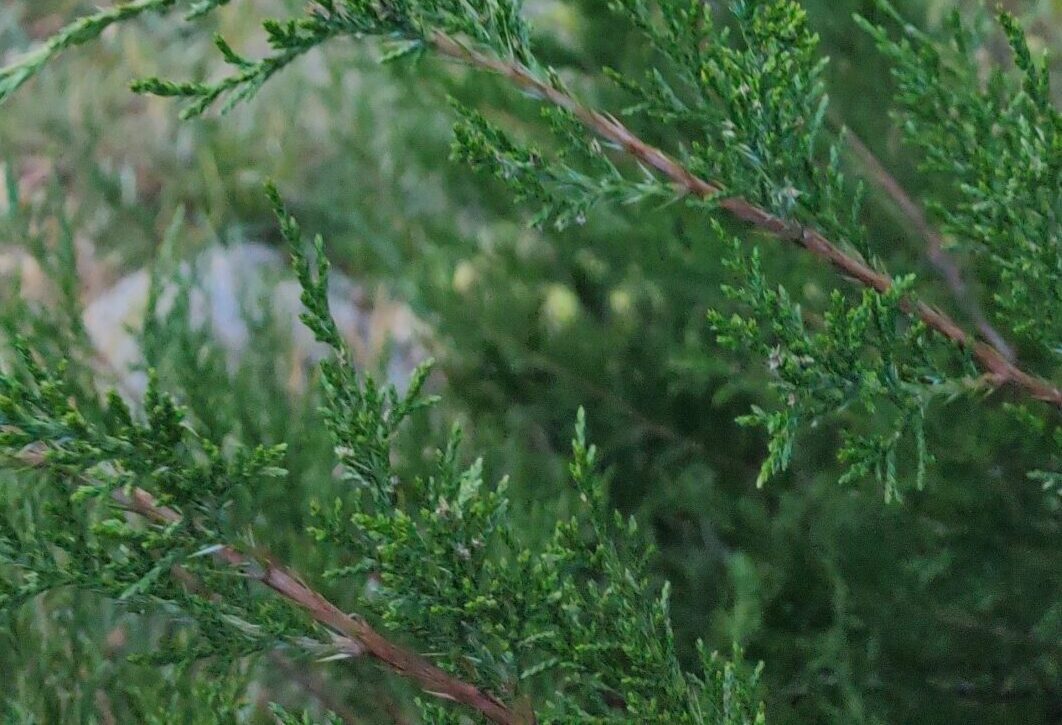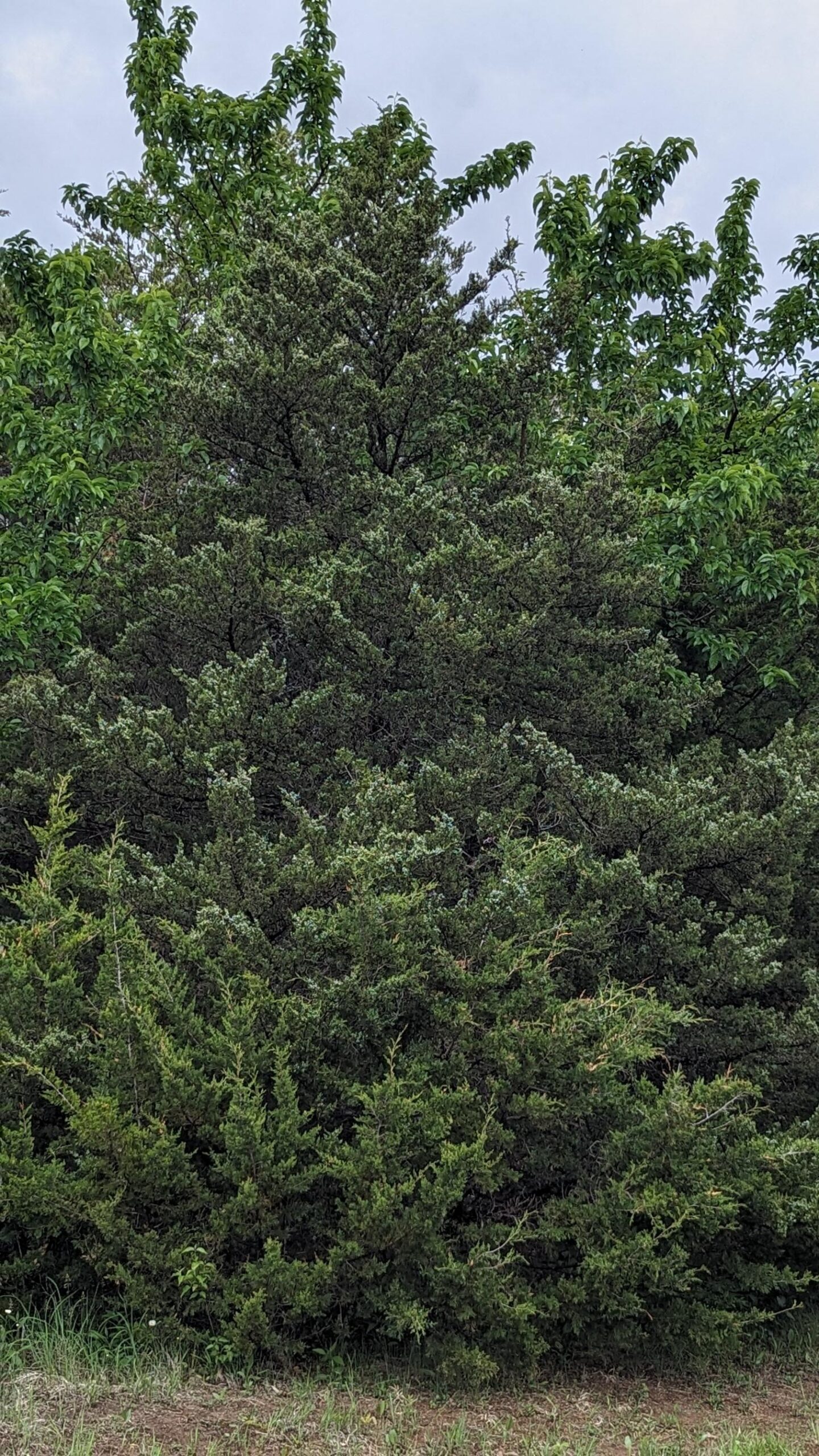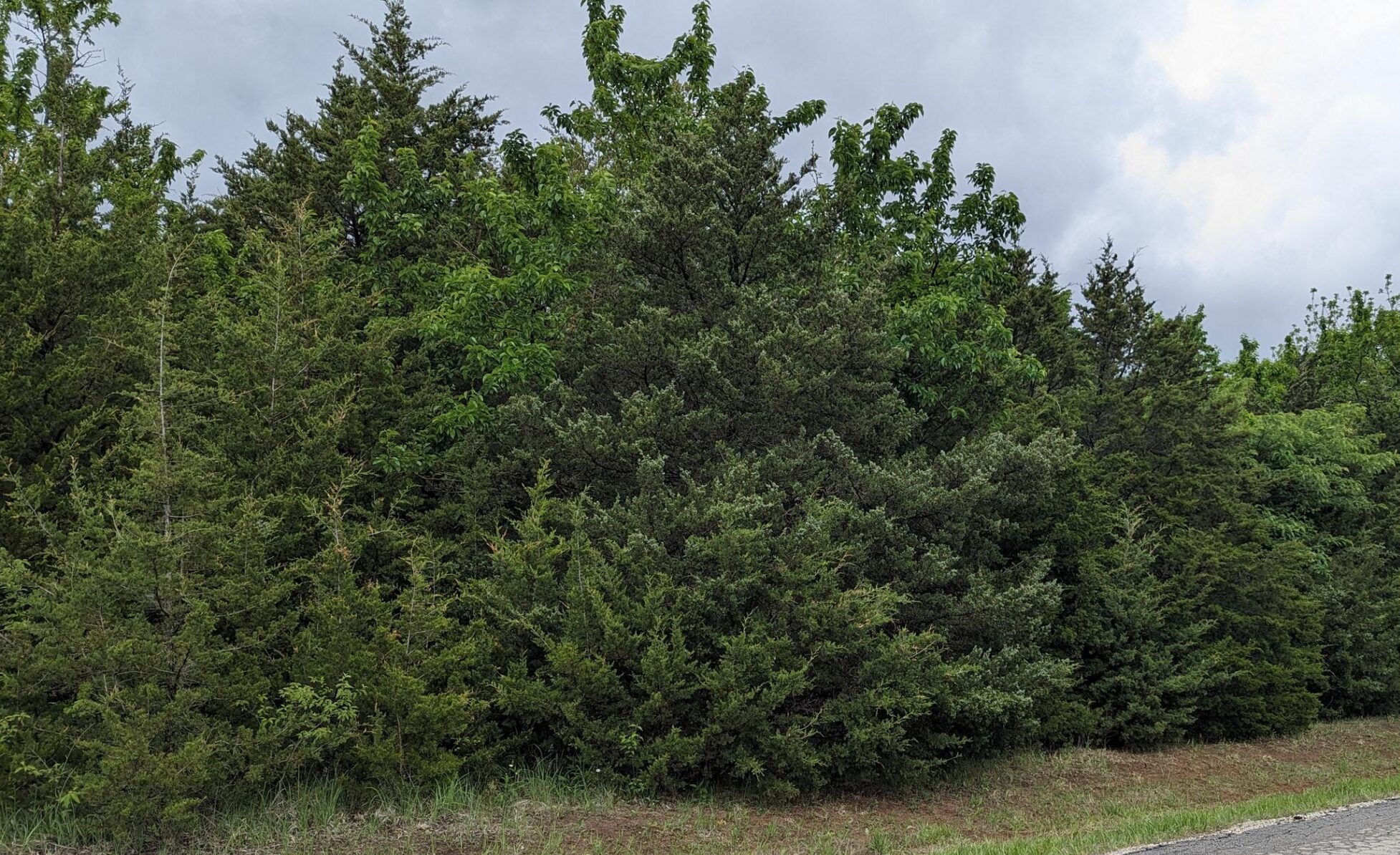Eastern Red Cedar
Juniperus virginiana


Eastern red cedar foliage

Eastern red cedar
Native Americans revered eastern red cedar trees and used them for ceremonies, incense, purifiers, canoes, bows, bedding, mats, drums, flutes and medications1. Early on colonists recognized the value of the tree for construction of fences, shingles, benches, tables, coffins, and the superstructures of boats2. An oil from the resin is used in manufacturing ointments and soaps, and to flavor gin.3 The red, aromatic wood is used for chests, closets, interior finish, posts and pencils. Outside, the tree is used for wind breaks, Christmas trees, erosion control, fence posts, cedar chips and mulch.4
The fruit of the tree is eaten by many species of birds and mammals. Cedar waxwing birds are named for their preference for the tree’s fruits5. The thick crowns of cedars also provide nesting and roosting for many birds. Winter food and protection is particularly important for pheasant, mule deer and whitetail deer.
Eastern red cedar is actually a juniper and is in the Cypress family. It is only one of two junipers that are native to Missouri6 and the only evergreen native to Kansas7. Originally these conifers were found on glades, bluffs and cliffs. They grew in places fire could not reach and were uncommon in the landscape. In the years since European settlement brought fire suppression and other changes in land use, the red cedar is commonplace and ultimately can turn a prairie grassland into a forest, threatening the survival of some prairie plants. Prescribed burning and cutting of woody plants such as cedars will help prairies and glades to survive.
- USDA – Eastern Red Cedar Plant Guide ↩︎
- Lady Bird Johnson Wild Flower Center – Juniperus virginiana ↩︎
- Missouri Department of Conservation Eastern Red Cedar Field Guide ↩︎
- Lady Bird Johnson Wild Flower Center – Juniperus virginiana ↩︎
- Lady Bird Johnson Wild Flower Center – Juniperus virginiana ↩︎
- Missouri Department of Conservation Eastern Red Cedar Field Guide ↩︎
- Kansas Forest Service – Eastern Redcedar ↩︎

Row of estern red cedars
